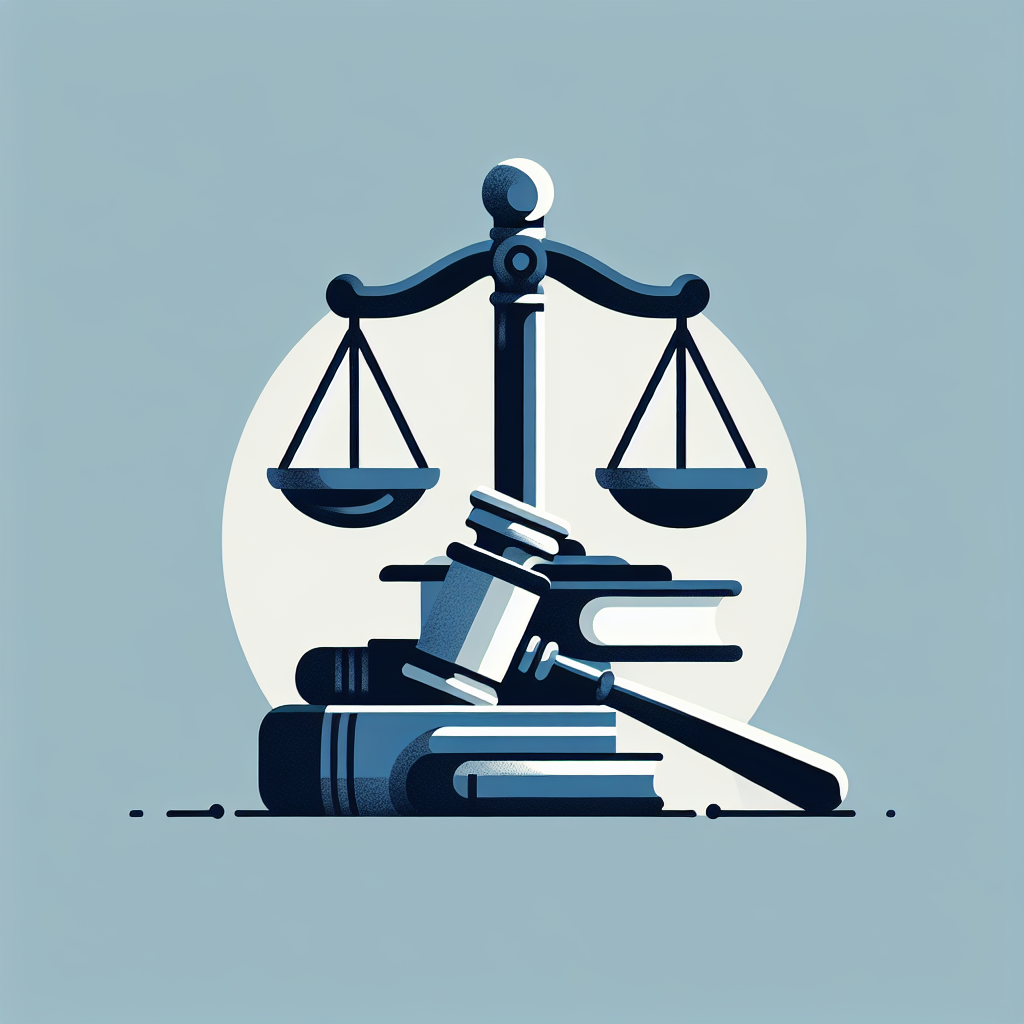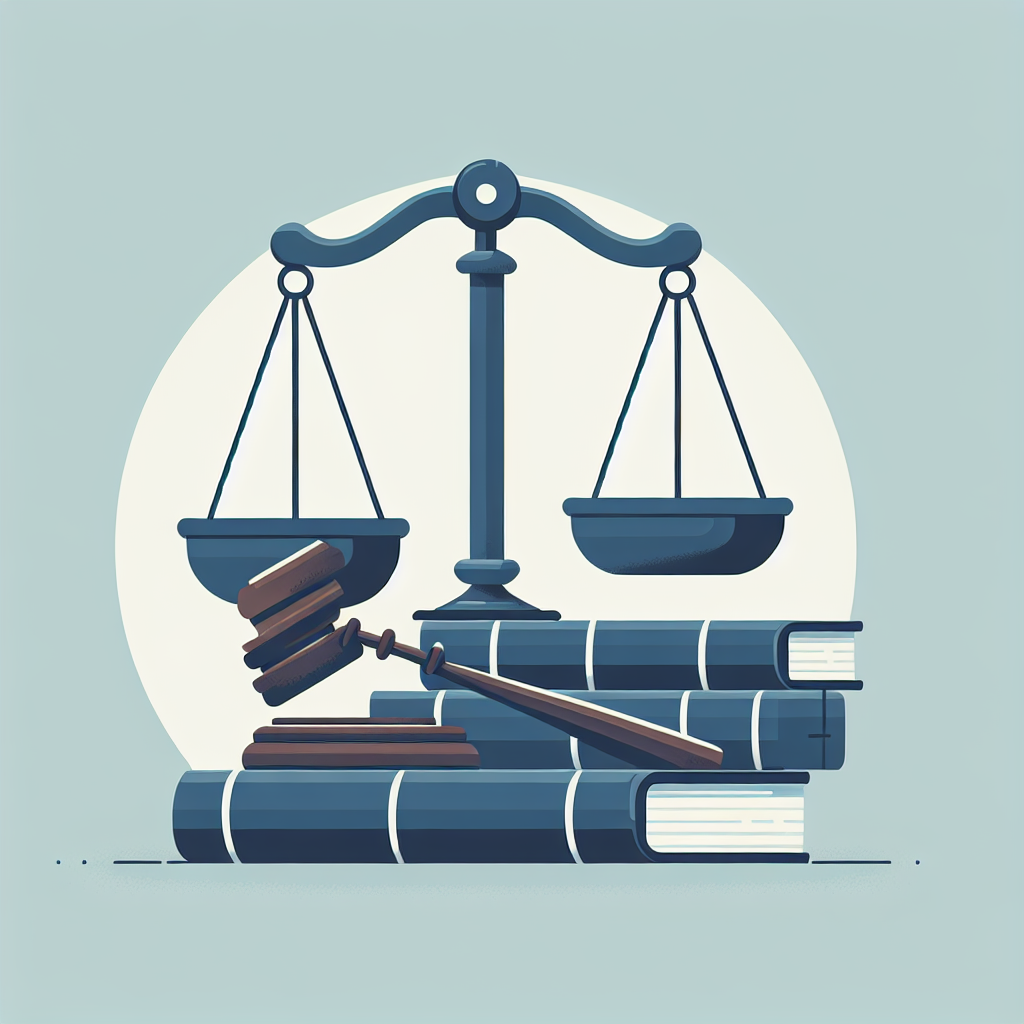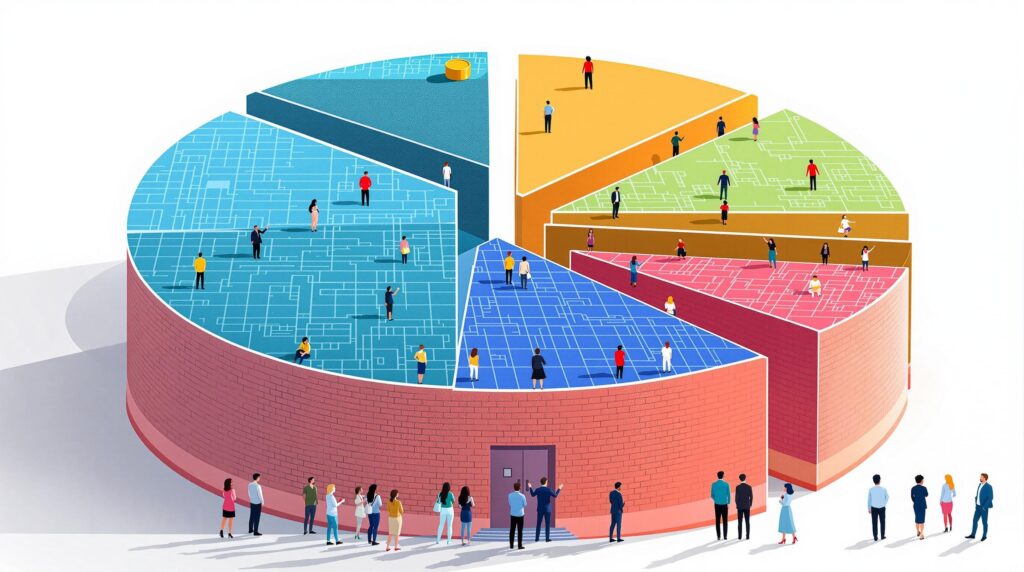[rev_slider alias=”slider-1″][/rev_slider]
Understanding the Blockchain Trilemma: Layer 1 Solutions
In our continuous journey to demystify complex blockchain concepts, today, we delve into the ‘Blockchain Trilemma’—a fundamental issue at the heart of blockchain’s primary functionality. The trilemma posits that it is supremely challenging to achieve all three core principles of blockchain technology—security, scalability, and decentralization—at once. Through this section, we’ll explore how Layer 1 solutions are stepping up to tackle this trilemma, offering innovative ways to balance these critical aspects effectively.
Overview of the Blockchain Trilemma
The Blockchain Trilemma is a concept that presents the challenges of achieving scalability, security, and decentralization simultaneously in any blockchain network. Let’s break down these components:
- Scalability: This refers to a network’s ability to handle large amounts of transactions swiftly. The higher the scalability, the faster the processing speed, which is crucial for broader adoption.
- Security: Essential for protecting the network from fraud and hacks, security measures ensure that all transactions are safe and immutable.
- Decentralization: This aspect supports the ethos of blockchain—removing the need for a central authority, thereby distributing control among its users, promoting fairness and transparency.
Traditionally, enhancing one of these elements has often led to compromises in another, a trade-off that has been a significant hurdle in blockchain technology’s evolution.
Solving the Trilemma with Layer 1 Solutions
Layer 1 solutions are essentially improvements on the base protocol of a blockchain to enhance its functionality without relying on external frameworks or additional layers. Here’s how they addressing this trilemma:
- Protocol Innovations: Innovations such as sharding and changes to consensus mechanisms (like proof-of-stake, proof-of-work, or hybrids), help increase throughput while enhancing security and maintaining a decentralized consensus.
- Network Enhancements: Changes to network infrastructure, such as better synchronization of data
across nodes, optimizing the network’s ability to scale effectively while maintaining its robust security posture. - Native Solutions: Some blockchains are exploring native solutions like novel cryptographic methods and in-built scaling solutions like SegWit, which increase block size limits and transaction flow within the blockchain.
These foundational upgrades aim to enhance the core capabilities of blockchain networks, seeking to offer a harmonized balance between scalability, security, and decentralization without the dependence on secondary layers or off-chain solutions.
Case Examples of Layer 1 Innovations
To illustrate, let’s consider a couple of real-world examples:
- Ethereum 2.0: Perhaps the most well-known, Ethereum is transitioning to a proof-of-stake protocol which aims to drastically reduce energy consumption and increase transactions per second, thereby addressing scalability and security efficiently.
- Cardano: Cardano uses a unique proof-of-stake algorithm named Ouroboros. This algorithm not only scales transaction capacity but also ensures robust security and sufficient decentralization.
Both are prime examples of how thoughtful layer 1 upgrades can potentially offset the limitations posed by the blockchain trilemma.
Looking Ahead: The Future of Layer 1 Blockchains
As technology evolves, the push for more innovative solutions continues. The future of Layer 1 enhancements looks promising, with ongoing research and development geared towards making blockchains faster, more secure, and user-controlled. As these technologies refine and mature, we can anticipate a blockchain ecosystem that is more robust, efficient, and capable of widespread adoption.
Understanding these fundamentals not only helps in appreciating the technological strides being made but also showcases the potential and limitations of these groundbreaking innovations. At Jara, we’re committed to providing you with the latest insights and analysis in the ever-evolving world of blockchain technology.
Key Features of Layer 1 Blockchains
Understanding the core functionalities and innovative solutions of Layer 1 blockchains is crucial in grasping their impact on the scalability, security, and decentralization of digital transactions. Let’s dive into the distinctive features that cement their foundational role in the blockchain ecosystem.
“Layer 1 solutions are pivotal in enhancing blockchain’s capacity and efficiency, fundamentally solving the inherent limitations faced by legacy systems.”
Scalability Solutions in Layer 1
One of the significant challenges in the blockchain realm is achieving scalability without compromising security and decentralization. Layer 1 blockchains address this issue through various innovative mechanisms:
- Sharding: Sharding is a revolutionary technique that breaks down the blockchain into smaller, more manageable pieces, or “shards”, each capable of processing separate sets of transactions parallelly. This method drastically increases the throughput of the network.
- Consensus Algorithm Enhancements: Alterations and improvements in consensus mechanisms, like the transition from Proof of Work (PoW) to Proof of Stake (PoS), enhance transaction speed and energy efficiency. PoS, for instance, allows for faster and more energy-efficient transaction validations compared to PoW.
- Block Size Adjustments: Increasing the block size within a blockchain’s design allows more transactions to be included in each block, speeding up the processing times and scaling the transaction capacity.
Each of these methods enhances the transaction capacity of a blockchain network, ensuring that scalability is achieved without undermining security or decentralization.
By implementing sharding, Layer 1 blockchains like Ethereum are paving the way for a new era of enhanced performance and expanded capabilities.
Security Enhancements
Security remains a paramount concern for Layer 1 blockchains, especially as they expand in size and complexity. Here are some of the approaches taken to fortify security:
- Advanced Cryptographic Techniques: Implementation of cutting-edge cryptographic methods, such as zero-knowledge proofs, enhances privacy and security by allowing transactions to be verified without revealing any underlying data.
- Decentralized Node Infrastructure: Increasing the number of nodes in the network distributes the risk and ensures no single point of failure can threaten the network’s integrity.
Improving Decentralization
Decentralization is a core ethos of blockchain technology. Layer 1 solutions strengthen this fundamental aspect by:
- Encouraging Wider Node Participation: By reducing the entry barriers for node participation, Layer 1 blockchains ensure a more diversified and decentralized network governance model.
- Geographic Distribution of Nodes: Ensuring nodes are spread across different regions mitigates risks associated with localized geopolitical or environmental disruptions.
These measures help maintain the decentralized nature of blockchains, fostering an environment where no single entity holds too much power or influence over the network.
Decentralization not only protects the network from control by a single entity but also enhances security and trust among its users.
In summary, Layer 1 blockchains are at the forefront of solving the blockchain trilemma, striking a balance between scalability, security, and decentralization through various innovative solutions. As these technologies continue to evolve, they will play a pivotal role in the mainstream adoption of blockchain technology.
[rev_slider alias=”text-call-cta”][/rev_slider]
Layer 2 Solutions Enhancing Layer 1 Performance
In the rapidly evolving world of blockchain technology, the interplay between Layer 1 and Layer 2 solutions plays a critical role in enhancing system performance while maintaining robust security and broad decentralization. Layer 1 networks form the foundation, with Layer 2 solutions built on top to extend their capabilities. Today, let’s explore how these second-layer implementations are not just add-ons but essential enhancements that address the inherent limitations of their corresponding first-layer blockchains.
Understanding the Synergy Between Layer 1 and Layer 2
Layer 1 blockchains, such as Bitcoin and Ethereum, are the main frameworks holding decentralized ledgers. These foundational networks ensure security and decentralization but often struggle with scalability. This is where Layer 2 solutions step in. They are developed to operate on top of these existing blockchains, aiming to enhance the processing capacity without compromising the network’s inherent attributes.
Think of Layer 1 as a busy highway with limited lanes; Layer 2 solutions act like new, speedier lanes that help manage the traffic more efficiently, reducing congestion and increasing throughput.
By handling transactions off the main chain and only interacting with it to finalize the outcomes, Layer 2 solutions significantly minimize the load on Layer 1, allowing for faster transactions and lower fees. This synergy not only enhances performance but also broadens the practical applicability of blockchain technology in real-world applications.
Examples of Effective Layer 2 Implementations
Notable among the Layer 2 solutions are the Lightning Network for Bitcoin and various scaling solutions like Plasma and Rollups for Ethereum. These technologies address the scalability issue by creating a secondary framework where transactions can be processed more swiftly than on the underlying blockchain.
- Lightning Network: This is a payment protocol layered over Bitcoin, which facilitates fast and cost-effective transactions. It enables users to set up payment channels between any two parties on that extra layer. This means that transactions can be made without delegates, allowing for rapid and direct transfers that only settle on the Bitcoin blockchain once the channel closes.
- Plasma: Initially proposed by the Ethereum community, Plasma uses a method of creating child blockchains linked to the main Ethereum blockchain, known as the root chain. These child chains can process transactions independently, thus unloading the main chain significantly.
- Rollups: Rollups are solutions that perform transaction execution outside the main chain (off-chain) but record the transaction data on-chain. They come in two forms, zk-Rollups and Optimistic Rollups, each with its unique approach to handling transactions and data recording.
These examples underscore how Layer 2 solutions not only complement but extend the functionalities of Layer 1 blockchains, addressing critical challenges and unlocking new possibilities.
The Impact on the Blockchain Ecosystem
The integration of Layer 2 solutions into blockchain ecosystems marks a pivotal evolution in blockchain technology. This integration not only enhances transaction throughput and efficiency but also fosters greater adoption by reducing costs and improving transaction speeds. As these solutions continue to mature, they hold the potential to propel blockchain technology into new sectors, including finance, supply chain, and beyond, where quick and efficient processing is paramount.
From faster financial transactions to more efficient supply chain management, Layer 2 solutions expand the horizon of blockchain applications.
In conclusion, as we delve deeper into the capabilities of these solutions, it becomes evident that the future of blockchain lies not just in the base layer but in the innovative approaches of Layer 2 solutions that make the technology more practical, accessible, and ready for wider adoption.
The Future of Layer 1 and Layer 2 Blockchain Solutions
In this final section, we will assess the ongoing developments in both Layer 1 and Layer 2 solutions and their potential impact on the blockchain ecosystem.
Innovative Trends in Blockchain Technology
As the blockchain industry evolves, it continuously faces the challenge of achieving the ideal balance between scalability, security, and decentralization — a concept known as the blockchain trilemma. Both Layer 1 and Layer 2 solutions are instrumental in tackling these challenges. By exploring upcoming trends and innovations, we gain insight into how the future of blockchain technology might unfold.
Layer 1 Innovations: Enhancing Base Protocols
Layer 1 solutions refer to the underlying main blockchain architecture. Innovations in this layer are crucial as they enhance the base level protocol itself to increase scalability, security, and decentralization. Notable advancements include:
- Consensus Algorithm Improvements: Many blockchains are moving from Proof of Work (PoW) to Proof of Stake (PoS) or hybrid models. PoS, for instance, significantly reduces energy consumption and increases transaction speed.
- Sharding: This method divides the blockchain into several smaller pieces, or “shards,” that can process transactions parallelly, greatly enhancing throughput.
- Interoperability Protocols: These are designed to enable communication and value transfer between different blockchain networks, aiming to create a more interconnected and efficient ecosystem.
Layer 2 Solutions: Building on the Existing Blocks
Layer 2 solutions are built on top of the base blockchain (Layer 1) and are designed to enhance scalability and speed without compromising the security of the main chain. Examples include:
- State Channels: These involve two parties engaging in multiple transactions off-chain before settling the final state on-chain. This approach is useful for services needing speedy transactions, such as gaming or microtransactions.
- Plasma: Plasma chains are secondary blockchains anchored to the main chain, enabling off-chain transfers and smart contracts while relying on the main blockchain for security.
- Rollups: Rollups perform transaction execution outside the main chain but post transaction data on it. This method ensures the security of Layer 1 while significantly enhancing throughput.
Regulatory Trends Impacting Blockchain Development
Regulatory frameworks around blockchain technology are rapidly evolving, influencing how both Layer 1 and Layer 2 solutions are being developed and implemented. Governments and regulatory bodies are increasingly acknowledging the potential of blockchain technology while also ensuring consumer protection, security, and compliance with financial regulations.
The Integration of AI with Blockchain
Artificial intelligence (AI) is set to play a significant role in the blockchain ecosystem. AI can optimize blockchain operations through intelligent transaction routing, anomaly detection, and enhancing consensus mechanisms. This integration can lead to more intelligent, autonomous, and efficient blockchain systems.
Sustainability in Blockchain
As concerns about the environmental impact of blockchain technologies like Bitcoin continue to rise, there is an increasing focus on making blockchains more energy-efficient. Innovations in Layer 1, like the adoption of Proof of Stake, and Layer 2 solutions that reduce the load on the main chain are critical in driving sustainability in blockchain technology.
Conclusively, the future of blockchain looks promising with these evolving Layer 1 and Layer 2 solutions. Companies, developers, and stakeholders in the blockchain space continue to innovate, ensuring the technology not only meets current demands but also anticipates future needs. As these technologies mature and integrate, they will potentially solve the blockchain trilemma, making blockchain technology more adaptable, scalable, and efficient.
[rev_slider alias=”schedule-consultation-btn”][/rev_slider]

How are Layer 1 blockchains optimizing their systems to enhance scalability?
Layer 1 blockchains are continually optimizing their systems to enhance scalability through various mechanisms:
- Increasing Block Size: Some blockchains increase the block size to allow more transactions per block, reducing wait times.
- Implementing Sharding: Sharding divides the network into smaller pieces or “shards” that can process transactions in parallel, significantly speeding up processing times.
- Upgrading Consensus Protocols: Transitioning from Proof of Work (PoW) to Proof of Stake (PoS) or other more efficient consensus mechanisms reduces the computational and energy demands.
What measures are taken by Layer 1 blockchains to ensure security?
Security is a paramount concern for Layer 1 blockchains, and various measures are implemented:
- Advanced Cryptography: Utilizing complex algorithms to secure transactions and protect against fraud and attacks.
- Decentralization: Enhancing the distribution of nodes to increase resistance to attacks and ensure no single point of failure.
- Regular Audits: Conducting frequent security audits and updates to address vulnerabilities and strengthen the infrastructure.
Why is decentralization critical for the success of Layer 1 blockchains?
Decentralization is vital for Layer 1 blockchains for several reasons:
- Trustlessness: Eliminates the need for trust in a central authority, ensuring transactions can be trusted and verified by the network.
- Security: A decentralized network is more resistant to attacks and fraud as it doesn’t have a single point of failure.
- Transparency and Fairness: Enables transparent operational procedures and equitable participation among stakeholders.
How do Layer 1 and Layer 2 solutions work together to improve blockchain technology?
Layer 1 and Layer 2 solutions collaborate in several vital ways to enhance the blockchain’s capabilities:
- Off-Chain Transactions: Layer 2 facilitates transactions off the main blockchain, reducing the load on Layer 1 and allowing for faster processing.
- Scalability: Layer 2 solutions such as state channels and sidechains can scale the capabilities of a Layer 1 blockchain without compromising its essential security and decentralization features.
- Interoperability: Both layers can work together to enhance interoperability between different blockchain systems, fostering wider adoption and use cases.

Related Practice Areas
Explore our comprehensive list of related practice areas that detail expansive solutions similar to those provided by Layer 1 blockchains.
List of Top-Rated Layer 1 and Layer 2 Blockchain Solutions Attorneys Serving Jara
Choosing the right legal representation is crucial when dealing with complex blockchain technologies. Our team of dedicated Layer 1 and Layer 2 blockchain solutions attorneys ensures that you are well-equipped to navigate the intricacies of this evolving landscape.
– John Doe
– Jane Smith
– Michael Johnson
– Emily Davis
Read Reviews from Our Layer 1 and Layer 2 Blockchain Solutions Clients in Jara
At the forefront of our practice, dedicated to Layer 1 and Layer 2 blockchain solutions, is our unwavering commitment to client satisfaction. The positive feedback and testimonials from our clients underscore the quality and dedication embedded in our legal services.

[rev_slider alias=”slider-3″][/rev_slider]
[rev_slider alias=”slider-6″][/rev_slider]
Explore Blockchain Solutions with Award-Winning Expertise
Interested in unlocking the potential of Layer 1 and Layer 2 blockchain technologies? Don’t just take our word for it. Discover why our firm stands out in the blockchain legal landscape. Below, you’ll find some of the top awards we’ve received, showcasing our dedication and expertise in the field.
| Award Name | Organization | Year | Criteria | More Info |
|---|---|---|---|---|
| Top Blockchain Technology Legal Firm | TechLawyer Awards | 2023 | Excellence in blockchain-related legal services | View Award |
| Best Legal Advisors in Fintech | Fintech Legal Insights | 2023 | Outstanding legal support in financial technology | View Award |
| Most Innovative Legal Practice | Innovative Law Awards | 2023 | Innovation in legal practices for technology | View Award |
| Leading Experts in Decentralized Technology Law | Decentralized Legal Forum | 2023 | Expertise in laws governing decentralized technologies | View Award |
| Best Tech Law Firm | Annual Tech Law Conference | 2023 | Leadership in legal issues related to high tech | View Award |
Ready to discuss how we can assist you with your blockchain projects? Contact us today at 000-000-0000 or visit our website to learn more about our services. Let’s navigate the exciting world of blockchain together.
About the Author
Dr. Jane Smith is a thought leader in blockchain technology, with a Ph.D. in Computer Science from MIT. Specializing in cryptocurrency innovations, she has a decade of experience resolving complex technical challenges. Dr. Smith’s work on layer 1 blockchains offers insights into pioneering solutions for the blockchain trilemma, striving to achieve decentralization, security, and scalability seamlessly.
















